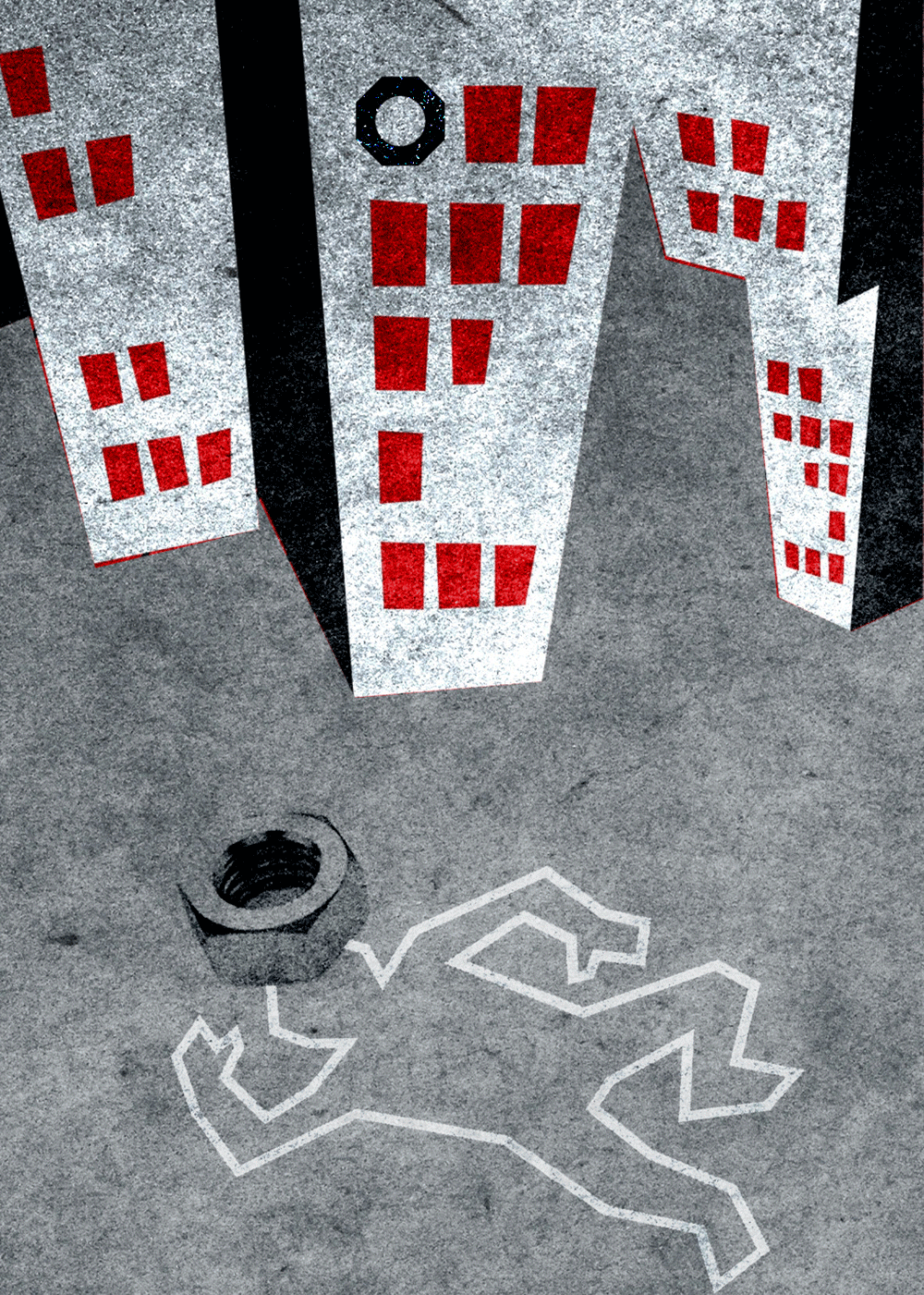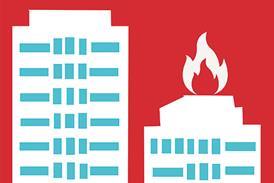In November 2014, two large steel bolts fell from the 47-storey Leadenhall Building (popularly known as ‘the Cheesegrater’) in the City of London. A third bolt fell not long after. An investigation into the original breakages concluded that the bolts failed because they suffered from hydrogen embrittlement – essentially, they snapped.
Such a phenomenon is difficult to predict other than by expert inspection, and can be caused by a number of factors, none of which necessarily imply manufacturing error.
Using the bolt breakages on the Cheesegrater as our starting point, we discuss the key considerations surrounding liability when pieces break off a building. We look at what a building’s owner can do to keep the building a commercially attractive option for prospective tenants, and how it can address the concerns and expectations they will invariably have.
Discerning liability
At the time of writing, the developer and owner of the Cheesegrater, British Land, has commissioned its contractors and consulting engineers to inspect the approximately 3,000 bolts remaining on the building, but the outcome of the investigations has yet to be disclosed. British Land will likely argue that the breakages are a structural or material problem for which it cannot be held liable. Manufacturers of this type of bolt will also deny responsibility; as suppliers, they can have no knowledge of exactly how their bolts will be employed.

When pieces fall off a building, the choices as to who is ultimately liable are wide. The building owner, occupier (as tenant), contractor, sub-contractor, designer, consulting engineer, sub-consultant, manufacturer, and/or material supplier can all be liable in contract or in tort if, for example, a piece falls on someone below. And what if it proves that these bolts themselves, or the circumstances in which they have been employed, make them unsafe? Litigation about choice, employment and installation would run for years, let alone any litigation about the safety of the building or its occupation.
Although English law has developed its own industry in examining and expanding areas of liability, the rules are simple here. Something has gone wrong, either in design, construction or manufacture. Investigations will eventually establish who should pay, but, in the meantime, any innocent third party will be able to recover damages. We no longer have a legal system under which a claimant can be forced to sue a collection of defendants who will blame each other and make it almost impossible for the claimant to find the right target. In this instance, British Land may be directly in the firing line.
British Land has claimed that the bolt failures have not affected the structural integrity of the building, nor posed any danger to the public. But the Cheesegrater is not a building for which British Land paid, nor is it in a suitable state for confident occupation or letting. It is here that the bolt failures will have the biggest impact. Following the inspections, replacements have now apparently been made, and British Land seems confident that there will be no further breakages – but no prospective tenant can ignore this now well-known structural failure.
There is clearly a lot to say about immediate liability for the broken bolts. If anyone innocent is hurt or their property damaged, there can be no answer on liability apart from some in-fighting between British Land, as the building owner, and those other potentially liable parties we list above. Even if the only areas of liability to be addressed are the cost of repairs and any other losses, and despite the availability of detailed technical reports, multi-party litigation seems likely.
Letting out the building: next steps
Whatever rights and remedies British Land might have against its contractor, professional team and sub-contractors, it will wish to press on with the letting of the various office suites within the Cheesegrater to commercial tenants. This is the major area where a patent building defect will require extensive attention by the owner. We now look at how the building owner, as landlord, can address the concerns and expectations of prospective tenants once a defect becomes common knowledge, while ensuring that the building remains a commercially viable option.
The landlord’s position
The Cheesegrater is being let in parts, rather than as a whole. As such, the primary responsibility, as between the building owner (who will become the landlord) and its tenants, for the structure and exterior of the building, will remain with the owner. It will wish to fully market the office suites and achieve lettings as soon as possible, but still preserve the investment value of the building.
To do this, the landlord will first need to persuade the prospective tenants either that the risk posed by the defect is limited, or that they are given recourse against the landlord’s contractors and consultants. The landlord will have to provide to prospective tenants any investigation and compliance reports, plus warranties from the building’s contractors.
Second, the landlord should ensure that leases are granted on full repairing and insuring terms, and with appropriate qualifications, so that the landlord does not find itself being in breach of its covenant for quiet enjoyment, or liable for a claim for derogation of grant. The leases should be drafted in such a way to ensure that, first, the landlord is entitled to erect scaffolding for remedial and other works, notwithstanding that access of light and air to the offices might be adversely affected; second, that the landlord is not responsible for any repair or maintenance under the service charge provisions, unless and until the tenant notifies it of a defect or a disrepair; and third, that the leases contain the usual provision against negligence and matters outside the control of the landlord.
The landlord will usually have the right to recover repair and maintenance costs of the building from its commercial tenants under any service charge provisions in the lease. The landlord would therefore not expect the tenant’s repairing obligations or the service charge provisions to be qualified, capped or limited in any way so as to limit the recoverability of service costs.
However, to achieve the lettings, the landlord may need to accept that, for the first two or three years of the lease term, it agrees to use its reasonable endeavours to enforce its rights against the main contractor for any defect which might arise, and to apply any damages awarded in its reduction of the service charge.
The prospective tenant’s position
Tenants considering renting space in the Cheesegrater will have two major concerns – first, that they will be responsible, either directly, or indirectly through the service charge, for the repair and maintenance of the building if more bolts fail; and second, that the defect is serious enough that their businesses might be disrupted and that they might even be required to vacate the office suites and be unable to use them until the defect is remedied.
Before prospective tenants sign any lease, they will have a number of expectations which they will want the landlord to address.
First, they will expect: the building owner / landlord’s consultants to have identified the nature and cause of the defect, and issue and address any consultants’ reports so that prospective tenants can rely on their conclusions; that the recommendations in those reports have been complied with; and that a further report of compliance is issued, which, again, can be relied upon by them.
Second, prospective tenants will expect to receive a full suite of warranties from the building’s contractors that, if in the widely accepted form issued by the Construction Industry Council and other construction-related institutions, will give the prospective tenants a right to claim against those responsible, including the building’s contractor and designers, in the event of the prospective tenants’ businesses being disrupted due to a defect or the building proving not to be fit for its purpose.
Third, prospective tenants will expect the building owner to be obligated under the leases to pursue its remedies against its contractor and consultants for any defects, prior to incurring service charge costs in remedying defects. They might even insist on an indemnity being given by the building owner to recover any losses arising from business disruption due to a defect arising.
Conclusion
A simple incident like a bolt falling from a building creates two areas of dispute. The first is relatively simple, revolving around the correction of any fault or damage to the building and identification of those who should pay. The second is more problematic, particularly for property lawyers, in that it centres on ensuring that the building remains institutionally lettable, useable and commercially viable. The best advice to a landlord and/or building owner is to take an active, even aggressive approach on both fronts, to avoid the building becoming a white elephant.















